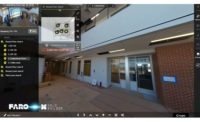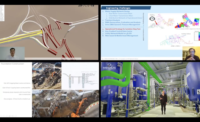Aerial Mapping Firm Nearmap Expands Offerings for AEC

Nearmap’s new AI-driven update is better able to distinguish vegetation from buildings and can identify construction.
IMAGES COURTESY OF NEARMAP
Getting a bird’s eye view of the jobsite is often delegated to drone flights and satellites. But aerial imagery provider Nearmap has seen an uptick in interest from construction companies and owners looking for its high-resolution mapping based on imagery captured in regular flyovers.
The Australia-based company is now planning to offer a wider range of products targeted at design and construction, including an AI-based algorithm that can automatically identify and classify construction sites from the sky.
“Within this AEC ecosystem, with all the cooperation between the state DOTs and large engineering and construction firms, we are seeing this massive need for better imagery,” says Tony Agresta, executive vice president of sales for Nearmap US. “In this COVID-19 world, imagery is becoming more important, as people are not traveling as much. Remote access is getting a little bit more attention.”
Nearmap’s imagery is based on the airplane flyovers it performs, and these flights have not slowed down due to the coronavirus pandemic, says Agresta. In the U.S., the company aerially surveys major population centers, covering more than 330,000 sq miles per year across 430 urban areas. Nearmap currently has coverage of the cities and suburbs that house 71% of the U.S. population.
But the aerial photography alone isn’t the point. The photogrammetry used by the company can be integrated with location data from major geospatial mapping firms such as Esri to generate accurate topographical imagery of the documented sites. Nearmap also has begun integration with Autodesk for design and construction workflows.
The planned AI update, slated for a June 1 release, can track several key features within the imagery that customers had requested, including automatically identifying construction zones and swimming pools.
It is also better at differentiating vegetation from structures. “You can see where the trees overhang the buildings,” says Agresta. “It puts them all in different color classifications. You can quickly scan and understand the environment.”




